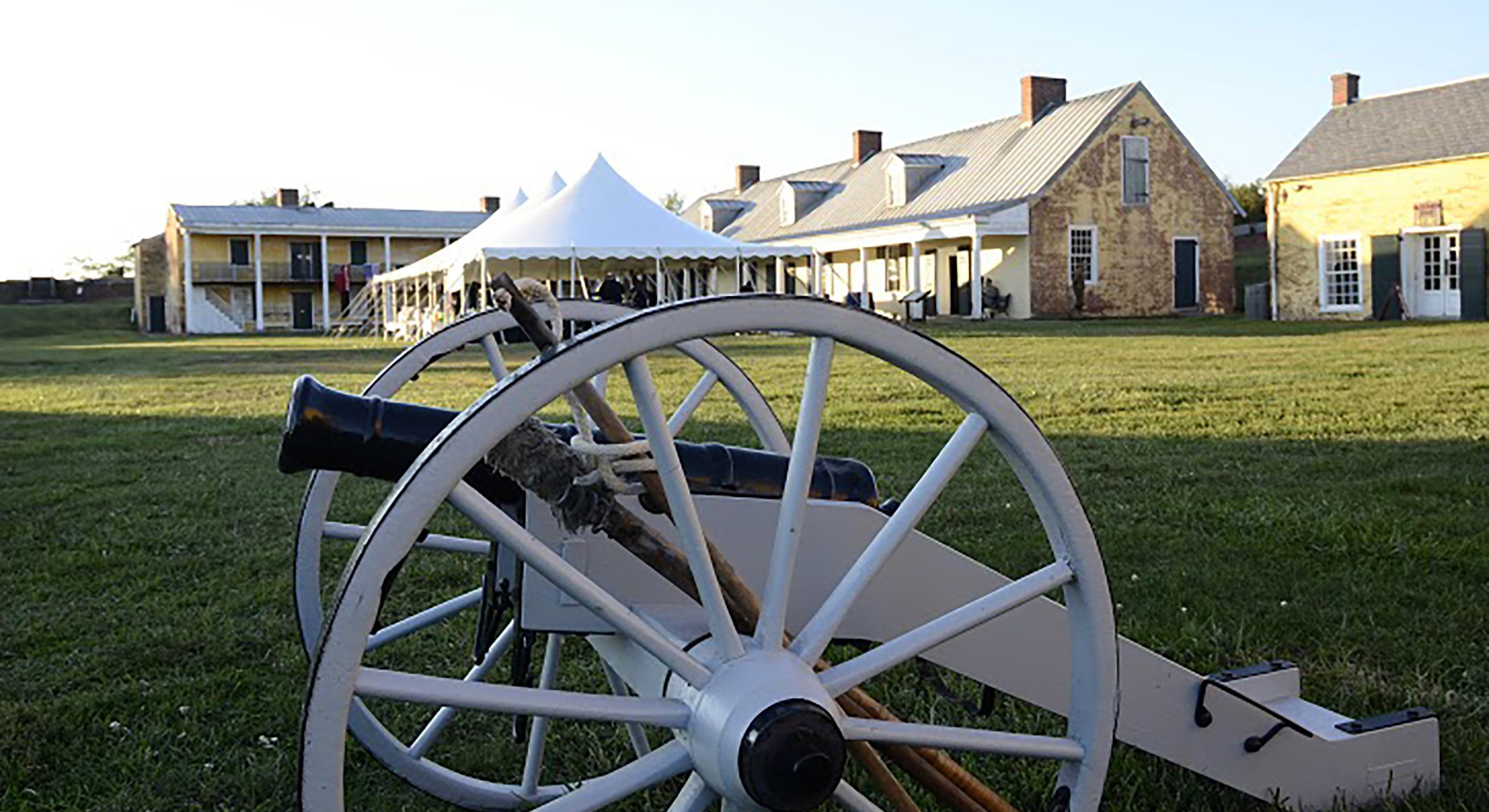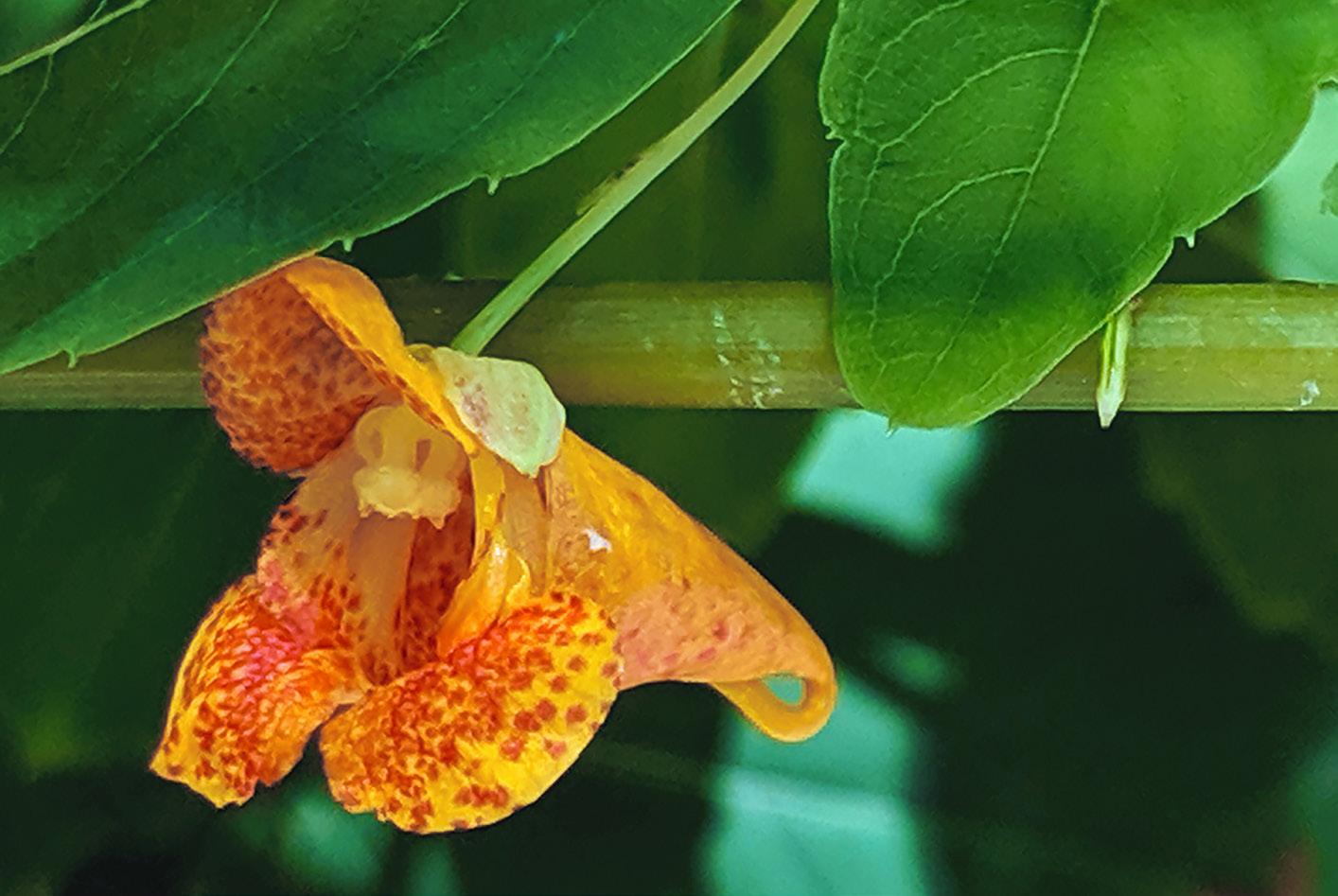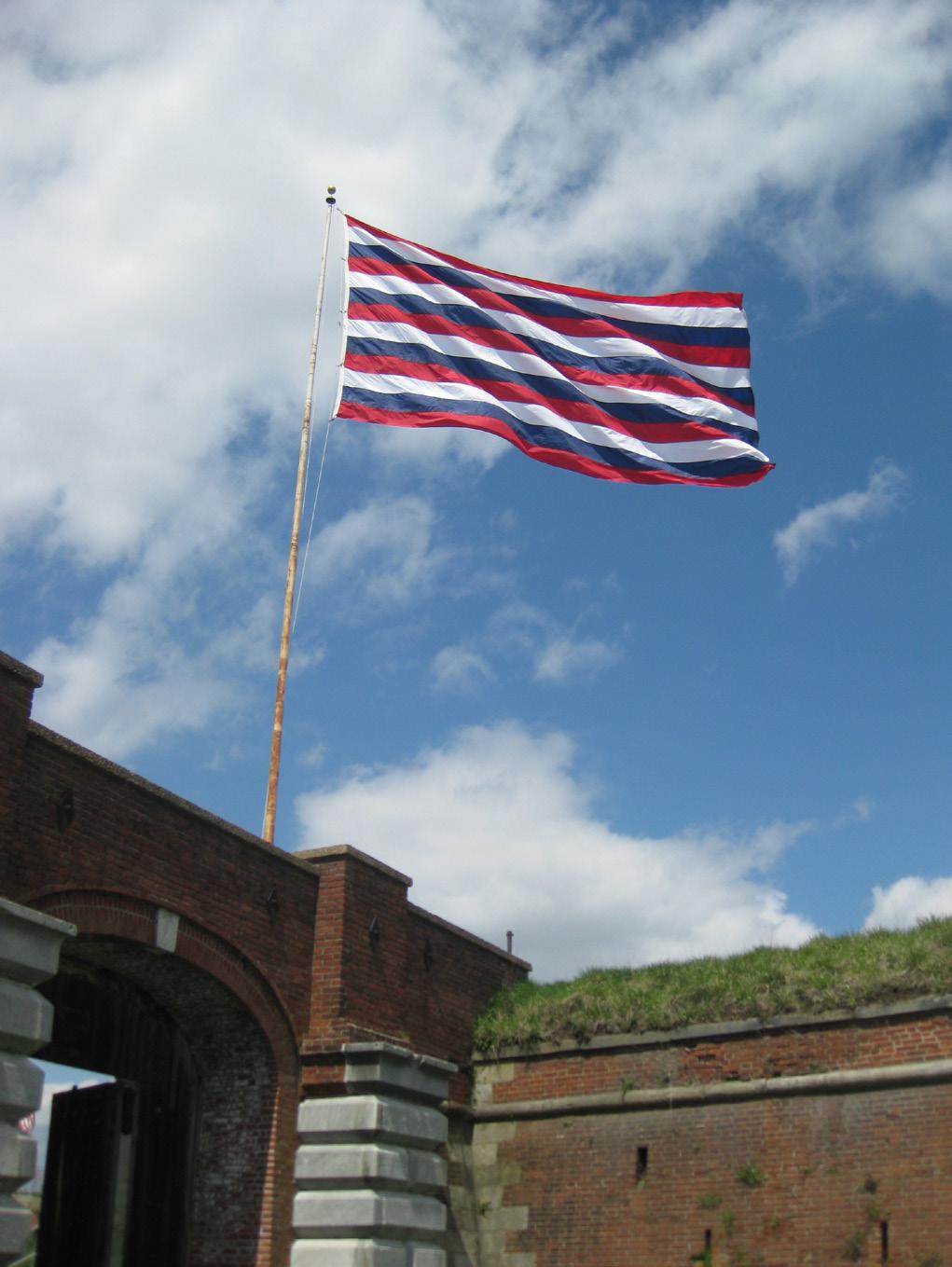




I hope that you are having a great summer and are finding some time to explore the Delaware River Watershed. For me, summer always ushers in a time of wanderlust. I have lived in this region for 35 years, and I am constantly amazed by the new places I discover.
My curiosity about the Estuary got me thinking about you, our Estuary News readers. Are you an Estuary explorer like me? Where is your favorite place in the Estuary? What special memories do you have from places you have visited in the Delaware River Watershed? If the answer to any of these questions is “yes,” then I encourage you to check out the featured stories (see page 8) in this issue and share your story with us.
In keeping with the theme of this issue, I’d like to share a few places I’ve recently explored in the Delaware Estuary Region.
Hopefully you are aware that we are in the planning phase of building a freshwater mussel hatchery at Bartram’s Garden in Philadelphia. My first visit to Bartram’s Garden was just a few months ago and it has quickly become one of my favorite places in the Estuary. The 45-acre National Historic Landmark, which was once home to John Bartram, is a destination
that features endless opportunities to explore, discover, and create. In addition to the historic house and beautiful gardens, the site offers free boating and fishing programs. This truly special place celebrates its history by connecting people with nature and the urban environment. To plan your trip, visit https://bartramsgarden. org or call (215) 729-5281.
I also recently visited Bordentown, New Jersey and was wowed by the history of this small city located at the confluence of the Delaware River, Blacks Creek, and Crosswicks Creek. Notable citizens of Bordentown include Clara Barton, founder of the Red Cross and Joseph Bonaparte, former king of Spain and Naples and brother to Napoleon I of France. If you visit, I recommend taking a walk on the Bordentown Bluffs Trail and enjoying the quaint town’s shops and restaurants including my favorite, Under The Moon Café.
I hope you enjoy the rest of the summer and I encourage you to do some exploring of your own in our diverse and wondrous watershed. And remember, if you do stumble across a hidden gem, please share it with us for a future edition of Estuary News by sending it to kklein@ delawareestuary.org. S
 Kathy Klein. PDE Interim Executive Director Partnership for the Delaware Estuary
Kathy Klein. PDE Interim Executive Director Partnership for the Delaware Estuary
Meetings conducted by the Delaware Estuary Program’s implementation and advisory committees occur on a regular basis and are open to the public. For meeting dates and times, please contact the individuals listed below: MEETINGS CONTACT LIST
Estuary Implementation Committee
Kathy Klein, Interim Executive Director (Chair) (800) 445-4935, ext. 102 kklein@DelawareEstuary.org
Monitoring Advisory & Coordination Committee
Elaine Panuccio, Water Restoration Scientist, Water Quality Assessment
Delaware River Basin Commission (609) 883-9500, ext. 307 elaine.panuccio@drbc.gov
Toxics Advisory Committee
Ron MacGillivray, Senior Environmental Toxicologist
Delaware River Basin Commission (609) 883-9500, ext. 257 ron.macgillivray@drbc.gov
Science and Technical Advisory Committee
Dr. Danielle Kreeger, Senior Science Director (800) 445-4935, ext. 104 dkreeger@DelawareEstuary.org

Water Quality Advisory Committee
John Yagecic, P.E., Manager, Water Quality Assessment
Delaware River Basin Commission
(609) 883-9500, ext. 271
john.yagecic@drbc.nj.gov






On June 5, Brenna Goggin stepped up to a podium and addressed more than 125 advocates for clean water.
“Five years ago, many of you started on this journey with us, and progress was made,” Goggin said of the Delaware Clean Water Alliance’s ongoing push for clean water legislation.
Goggin, who was a member of the Alliance’s steering committee and the Director of Advocacy and External Affairs for the Delaware Nature Society, spoke at the annual Clean Water: Delaware’s Clear Choice Campaign rally outside of Legislative Hall in Dover, Delaware. Collin O’Mara, CEO of the National Wildlife Federation, Delaware Representative and House Majority Leader Valerie Longhurst, Delaware Senator Pro Tempore David McBride and Delaware Senator Bryan To wnsend also spoke.

funding mechanism that would address it.”
“Each year, we get a little closer to accomplishing our goal,” Goggin said in the days following the rally. “So far, we have been successful in establishing the Clean Water and Flood Abatement Task Force that completed its goal of identifying the breadth of issues facing Delaware’s waterways as well as identifying a

House Bill 200, introduced this year, asks to earmark $25 million per year of already existing funds for drinking water testing and clean water/flood reduction projects. The bill went to the Delaware House of Representatives floor on June 5 and was reassigned to the House Appropriations Committee. The bill will have to pass out of that committee before it can return to the House floor for a vote.
This year’s Bond Bill, a section of Delaware’s budget, alloted $20 million for clean water funding. Of the $20 million earmarked for clean water funding, at least $1.6 million must be spent to improve access to clean drinking water in underserved communities. PDE is a member of the Clean Water Alliance, and staff members attended the June rally as advocates for clean water.
“Rallies can be essential to moving the needle on an issue,” Townsend said. “Five years of rallies are just a start, and I think the group is to be commended to have the organizational ability and the verve to keep the rallies going. I think people should take heart at the introduction of new legislation that has a better chance of passing."S

Every five years, each of the 28 National Estuary Programs (NEP) receives an evaluation. This evaluation involves a written report as well as a site visit to see programs in action.
As the host the Delaware Estuary Program, the Partnership for the Delaware Estuary (PDE) underwent a site visit from April 30 to May 2. PDE turned in its written evaluation earlier in the year, and welcomed representatives from the Washington, D.C. office of the Environmental Protection Agency (EPA), as well as EPA representatives from Region 2 and Region 3. It also welcomed the Executive Director of the Piscataqua Region Estuaries Partnership out of Durham, New Hampshire. Each day, PDE’s Interim Executive Director Kathy Klein and staff gave presentations to the evaluation team and led field trips to program sites within Pennsylvania, New Jersey and Delaware.
In Philadelphia, the program evaluation team observed PDE’s freshwater mussel program in action at the demonstration mussel hatchery housed at the Fairmount Water Works Interpretive Center. Team members toured the Camden County Municipal Utilities Authority in Camden, New Jersey, as well as the adjacent Phoenix Park to view a living shoreline project.


Other site visits and activities included a field trip to PDE’s shell recycling center in Wilmington, Delaware to see where PDE stores donated oyster shells for use in living shorelines projects and a trip to First State Montessori Academy to help install street art stickers. Two students from the school produced winning drawings in the Clean Waterways Wilmington Student Art Contest, a
program in which PDE partners with the City of Wilmington. In the contest, first place drawings are turned into street art featuring pollution prevention messages. PDE looks forward to talking about the organization’s growth and productivity during its next evaluation in 2024.S

Lush, expansive tidal marshes support good water quality, buffer coastal communities from storm damage, and provide habitat for wildlife. Sea level rise due to climate change, human encroachment and other factors have eroded thousands of acres of marshland. With effort, we may gain some of it back. According to PDE’s Technical Report for the Delaware Estuary and Basin (TREB), the Delaware Estuary lost more than 2,700 acres — 194 acres per year — of tidal marshland from 1996 to 2010. Although
cont’d on p13

Countless miles of abandoned coal mines and tunnels lay silently under Pennsylvania. Today, drainage from these vacant burrows is the largest source of pollution within the headwaters of the Schuylkill River. The health of the Schuylkill is better than it used to be, and the river can be enjoyed for boating and fishing. And with the help of partners and grant funding, more work
cont’d on p13

Abandoned mine drainage is the top pollution source in the Schuylkill River Watershed. Remediation projects, however, are addressing this problem.



The Delaware River Basin commission (DRBC) wants to find out how much people value area waterways.
With approval from its commissioners, the agency earlier this year began a William Penn Foundation-funded project designed to increase public awareness of the Basin’s value.
Through education and outreach, the DRBC hopes to get people more involved with the Basin, not just recreationally, but through cleanups, becoming members of organizations to protect the Basin and talking to elected officials about protecting waters within the Basin.
To get started, the DRBC did some research. In April, the agency conducted an online discussion group to determine audience familiarity with the Delaware River and Basin, as well as analyze perceptions of the different threats to the Basin’s waters.

Next, was a June telephone survey of 602 respondents who live in states within the Basin.
The telephone survey asked a variety of questions, such as if people think water in the Delaware River Basin is cleaner, dirtier or the same as it was 50 years ago, and whether they would be willing to take action to protect the Delaware River Basin, such as by contacting elected officials, signing a petition, posting on social media or volunteering for a cleanup.
Here’s a sample of what the agency learned:
¾ The Delaware River is well liked, but it is perceived to be dirtier than 50 years ago.
¾ There are major concerns about the impact of pollution and climate change on the Basin.
¾ Plastic trash,

industrial waste and pesticides from farms are topof-mind pollution sources.
¾ While respondents are familiar with the Delaware River, the concept of Basin is less understood.
Results from the research will be used in a larger outreach effort, starting with the DRBC’s State of the Basin Report, which was published in July. It also will be part of a collective, multi-agency campaign called Our Shared Waters, set to become public in August. Agencies and the public will be able to access the Our Shared Waters website and Facebook page to lend their insights, reviews, photos, comments and more about the Delaware River Basin. Total funding from the grant is $530,000, which runs through October 2020.S

Last spring, the Delaware River Basin Commission (DRBC) encountered a mystery tucked away in a rarely used stairwell. Staff found two large wooden crates with a four section, scale model map of the Delaware River Basin.
The handmade, highly detailed model measures 6-feet by 16-feet. So large was the model that staff had to unpack and assemble it in DRBC’s parking lot in Trenton, New Jersey. No one, however, knows who commissioned the model, or who designed and built it. Some longtime staff members recall that the model was once displayed in the DRBC’s lobby, but there is no information about when it was disassembled and packed away.
The only possible clue to the model’s age is its lack of interstate highways. Construction of the Interstate Highway System was

Everyone has a summer story. There are special places that touch our hearts and senses, and give us memories to last a lifetime. PDE asked folks to share their summer stories. The following short essays are written by people within the Delaware Estuary, about places in the Delaware Estuary that have impacted their lives and left a lasting impression. Thanks to our contributors who shared their stories. Tell us your story. Send it with a photo to kklein@delawareestuary.org, or to klayton@ delawareestuary.org
We all know that Memorial Day is the “unofficial” start to summer. For most people, it’s about a long weekend, barbeques and taking that first cold swim in the backyard pool. But for me, Memorial Day means trekking into the forgotten reaches of the Delaware Estuary, away from the lively Philadelphia waterfront and the popular fishing spots on the Schuylkill. Go past the Bordentown marina with its bobbing boats, up Crosswicks Creek, pass through the Hamilton marshes, follow under the New Jersey Turnpike and out into the farmlands of Burlington County, New Jersey. There you’ll find it: a quiet
cont’d on p14


There were thousands of horseshoe crabs on Slaughter Beach. I watched them struggle through the surf. It was dark, and their shells shone in the moonlight. They’d come to lay their eggs. Nearby, my husband watched the birds. Red knots wheeled and dipped along the shore, devouring the crabs’ work.
cont’d on p14
If you fly often, like me, you may have noticed an old fort at the north end of the runway at the Philadelphia International Airport. For years I said, “I need to figure what that place is in the middle of nowhere.” I finally went a few years ago and
cont’d on p14

Built during the Revolutionary War, Fort Mifflin is now a place to get in touch with history.


 By Erica Rossetti, PDE Schuylkill Action Network Associate
By Erica Rossetti, PDE Schuylkill Action Network Associate
The Schuylkill River was once known as a “polluter’s paradise.” But several years of cleanup efforts have turned things around, and it’s a dumping ground no more.
One notable effort toward improving the Schuylkill is the annual Schuylkill Scrub, a watershed-wide cleanup coordinated by the Schuylkill Action Network (SAN). As part of this initiative, Schuylkill River Greenways, a key SAN partner, launched CleanSweep, a smart-phone app and webbased dashboard that further engages volunteers in cleaning trash and debris from the Schuylkill River Watershed.
CleanSweep creates one place for cleanup organizers and volunteers in the watershed to see measurable results from cleanups, which in turn could inspire future cleanups.
Through the app, users can report litter “hot spots,” register their own cleanup event, record cleanup results and view statistics and photos right from the field. The app and dashboard have an interactive map that helps users find cleanups close to home and view streamlined data from throughout the watershed. The app also tracks data year-round, allowing for expanded cleanup efforts in the watershed.
For more information and to download the app, check out the dashboard today at: www.SchuylkillCleanSweep.org.S

In May, students at Salem High School in Salem, New Jersey had a unique hands-on opportunity to learn about stormwater and green infrastructure. PDE partnered with staff from the Rutgers University Cooperative Extension Water Resources Program to provide a day of educational and interactive sessions focusing on the management of stormwater runoff on the school’s campus. Students, ranging from high school freshmen to juniors who are interested in engineering and environmental sciences, identified potential sites for rain gardens and tried their hands at designing attractive and sustainable planting palettes. The William Penn Foundation provided funding for this workshop and other programs. This workshop will be followed by rain garden installation projects on school grounds this fall, which is part of the Delaware River Watershed Initiative through the Kirkwood-Cohansey Cluster. S
For more information about rain gardens, go to PDE’s website at: http://www.delawareestuary. org/plant-a-rain-garden/.

On the first weekend in June, I zipped my tent and headed out toward a surging, earthencolored, thunderstorminvigorated Schuylkill River. As I gathered my belongings, a quiet, cheerful murmur grew amongst a campground full of more than 100 sleepy paddlers.
This was my first year participating in the Schuylkill River Sojourn, but it’s an annual tradition for a special group of people — some of whom have been dipping their paddles into the water for more than 20 years. As a native Philadelphian, I’d always wanted to see the entire Schuylkill River — and the Sojourn showed me how.
In kayaks and canoes, we paddled with our guides for seven days from the headwaters of the river in Schuylkill County. Surrounded by looming rhododendrons, diving kingfishers and blossoming mountain laurel we glided to the river’s rolling, widened expanse amongst afternoon traffic in downtown Philadelphia. As this year’s Sojourn Steward, I photographed our excursion and researched this year’s Sojourn theme, “Our Working River,” which explores the history of industry on the Schuylkill. I compiled historical photographs of workmen on the river, the projects they undertook, and the environmental impact these industries left on the environment. I made daily social media posts for the Schuylkill Action Network (SAN) to document these findings as well as the kayak journey. The group camped at historic sites and learned about programming from local industries and historians. Each morning we greeted a familiar, yet new, river.

I learned more about our waterways, and the hard-working people who keep them alive and available to the public, than I ever anticipated. I can’t wait to keep exploring these waters and fall into dreams with phantom waves lapping at my feet. The best view is, undeniably, from the water. See you out there! S
The Schuylkill River Sojourn is an annual seven-day, 112-mile guided paddle from Schuylkill Haven to Boathouse Row in Philadelphia. The Schuylkill River Greenways National Heritage Area organizes the trip each year. This was the 21st year of the Sojourn. More than 200 paddlers participated, with about 70 making the entire journey.

Q: I recently noticed a plant growing all over my yard. It has a thin stalk and vibrant orange flowers. Could you please help me identify it?
Much appreciated, Kathy, Wilmington, DelaWare
A: Dear Kathy, thanks for your question! The plant you are trying to identify is jewelweed (Impatiens capensis), a common plant native to North America that prefers moist soil. It actually has a history in Native American culture as a medicinal plant. People used the sap from the stem and leaves to relieve itching for a number of skin ailments. However, we now know that some people have experienced allergic reactions from the plant as well. The Latin genus Impatiens relates to the plant’s “impatient” seed pods. When ripe, the slightest touch will cause the pods to burst open, dispersing the seeds. In some areas, jewelweed can “take over” your yard or garden. It is, however, very easy to pull if you don’t want it (best to do so before it goes to seed in mid to late summer). As for me, I will take this fun and attractive native plant any day, especially over some of the more invasive plants around.
Thanks again for your question! S
Good gardening,
SarahBouBouliS, Perennial Pages eDitor
Perennial Pages is PDE’s quarterly newsletter that focuses on gardening for clean water. You can view all previous issues on our website at www.delawareestuary.org under the publications section. If you have a question you’d like to see answered in Digging Deeper, or for more information, send an e-mail to: sbouboulis@delawareestuary.org.



cont’d from p5
human impact has contributed to the loss of wetlands, human efforts are helping to reverse the damage. For example, PDE’s TREB reported that a project by the New Jersey-based PSEG utility company re-established more than 1,000 acres from 1996-1997 in Commercial Township, New Jersey. Without the PSEG project, losses reported in the TREB would have been much greater. The project worked to restore tidal flow and improve drainage to re-establish conditions for marsh plant growth. The company achieved its criteria for success in 2003.
Although stressors such as sea level rise and development will continue to threaten marshes, persistent attention and responsive action can, therefore, help offset the decline of tidal marshes and their benefits.S
cont’d from p5
to improve these waters is ahead.
Although there are untold miles of mines throughout the state, as of 2001, the Schuylkill Headwaters Association (SHA) has identified more than 160 abandoned coal mines within the Schuylkill River Watershed alone.
Abandoned mine drainage (AMD) that discharges from the former anthracite coal mines are often acidic and contain iron, manganese and aluminum. This pollution affects more than 125 miles of streams within the Schuylkill River Watershed in Schuylkill County. The second largest source of pollution in the watershed is fine coal particles, or siltation, from mining practices that took place before the Clean Water Act of 1972. Today, a few coal mines still operate in Schuylkill County. These mines follow Clean Water Act and other environmental guidelines.
Numerous organizations and state and federal agencies are working to restore the headwaters of the Schuylkill River, with the Schuylkill Headwaters Association (SHA) and the Schuylkill Conservation District taking the lead. With the help of these partners, SHA has received more than $5 million in grant funding to construct seven AMD treatment systems, conduct water monitoring throughout the watershed, implement restoration projects and create a Watershed Implementation Plan. This plan outlines the water quality impairments and prioritizes the treatment of AMD discharges, with the goal of bringing the Schuylkill River back to life, mile by mile.S
TIDINGS
cont’d from p9
authorized in 1956 under the Federal Aid Highway Act. The DRBC was created in 1961 by congress under President John F. Kennedy, so it is possible that the model dates back to the Commission’s early days, or that the agency inherited the model.
Since uncovering the map, the Independence Seaport Museum in Philadelphia has tentatively expressed interest in displaying the model.S


Horseshoe Crab Beach cont’d from p9
Memorial Day cont’d from p8
place in a quiet town. The Brigadier Gen. William C. Doyle Memorial Cemetery in Wrightstown, New Jersey is where each Memorial Day, the fields of flat stones fill with flags — one for each grave. They dance in the wind as a lone bugler plays taps. Here, among the dead, is Crosswick’s Creek Tributary, one of the many creeks that empties into the Delaware River. And here is where my summer starts each year: paying respect to America’s veterans.S
Horseshoe crabs have existed for millions of years. They look the same as their dinosaur-era ancestors. Long before humans evolved, migrated, conquered, created or destroyed anything, horseshoe crabs laid their eggs on this sand. They’re perfectly suited to the world. They have never needed to change.
A wave knocked a pair of crabs on their backs. Their legs made panicked circles in the air. My husband helped me flip them over, and they crept back into place. We were lucky to share their beach, their epoch, their planet. They made us feel peaceful and small. S
cont’d from p9
experienced Fort Mifflin. The fort was built during the Revolutionary War and sits next to marsh, wetlands, and forested areas along the Delaware River. Often unknown or overlooked, Fort Mifflin is an awesome place to take your family to learn about history and observe a unique part of the Delaware Estuary. Kids really like the reenactments, especially canons firing! This is also an inexpensive day trip for picnicking and bird watching. Plus, you get some really cool views of planes as the fly close overhead, and large tankers and cargo ships going up and down the river. Discover Fort Mifflin as a place to experience history and the Estuary. S
For more information about Fort Mifflin, go to http://www.fortmifflin.us/.


National Estuaries Week is Sept. 14 to 21. Why not celebrate with the Partnership for the Delaware Estuary?
4-7 p.m., Tuesday, Sept. 17 | Wilmington, Delaware
PDE will hold a shell bagging event near its headquarters in Wilmington, Delaware. Do your part to help PDE bag oyster shells that are donated from local restaurants. Instead of going to a landfill, donated shells return to nature where they play their part in preventing shoreline erosion, and providing habitat for shellfish and other creatures. Volunteers of all age are welcome to help. Please note that any volunteer under age 18 must be accompanied by an adult and have a waiver signed by a parent or guardian. More information, including the event’s location, will be provided if you register. Contact PDE’s Habitat Project Coordinator Sarah Bouboulis for more information at sbouboulis@delawareestuary.org.
Noon, Wednesday, Sept. 18 | DuPont Nature Center, Milford, Delaware
Hungry for knowledge? Attend a lunch and learn event at the DuPont Nature Center at Mispillion Harbor Reserve in Milford, Delaware. Sarah Bouboulis will be the guest speaker, with Restoration & Wildlife in the Delaware Estuary as her topic. Bouboulis will discuss PDE’s work to research and restore natural areas throughout the Delaware Estuary. Come learn about the region that PDE studies, the different living shoreline projects it has installed and the wildlife and ecosystem services that these projects support.
DuPont Nature Center is located at 2992 Lighthouse Road, Milford, DE 19963. To visit the website, go to: http://www.dnrec.delaware.gov/fw/Education/Pages/DNC.aspx.
p.m.,
Penn’s Landing in Philadelphia and Wiggins Park in Camden, New Jersey


Celebrate the Delaware River in both Pennsylvania and New Jersey at the Delaware River Festival. The Partnership for the Delaware Estuary, the Philadelphia Water Department, the Alliance for Watershed Education, the Center for Aquatic Sciences and others have partnered again for this dual state event that celebrates one great river. Explore the fun at both Penn’s Landing in Philadelphia and take the RiverLink Ferry for free to explore more of the festival at Wiggins Park in Camden, New Jersey. There will be free pedal boat rides, face painting, crafts for kids and free admission to the Independence Seaport Museum. For more information, visit the event’s website at https://www.delawareriverfest.org.
5 - 8:30 p.m., Thursday, Oct. 10 | Vie, Philadelphia
Join the Partnership for the Delaware Estuary ar our biggest fundraiser of the year. This year, the Experience the Estuary Event will be held at Vie in Philadelphia. This annual celebration attracts hundreds of friends and supporters of the Delaware Estuary. There will be cocktails and food, including the famous oyster raw bar, a wine pull and silent auction. More information is available at www.delawareestuary. org/sponsor-an-event/experience-estuary/



110 South Poplar Street, Suite 202
Wilmington, DE 19801
The Partnership for the Delaware Estuary, Inc. (PDE), is a private, nonprofit organization established in 1996. PDE leads science-based and collaborative efforts to improve the tidal Delaware River and Bay, which spans Delaware, New Jersey, and Pennsylvania. To find out how you can become one of our partners, call the PDE at (800) 445-4935 or visit our website at www.DelawareEstuary.org.
Partnership for the Delaware Estuary, Inc.
Kathy Klein
Tel: (800) 445-4935 / Fax: (302) 655-4991
E-mail: kklein@DelawareEstuary.org
Environmental Protection Agency
Irene Purdy, EPA Region II
Tel: (212) 637-3794 / Fax (212) 637-3889
E-mail: purdy.irene@epa.gov
Megan Mackey, EPA Region III
Tel: (215) 814-5534 / Fax: (215) 814-2301
E-mail: mackey.megan@epa.gov
Pennsylvania
Rhonda Manning
Department of Environmental Protection
Tel: (717) 772-4472 / Fax: (717) 783-4690
Email: rmanning@pa.gov
Delaware
Kimberly Cole
Department of Natural Resources and Environmental Control
Tel: (302) 739-9283 / Fax: (302) 739-2048
E-mail: kimberly.cole@delaware.gov
New Jersey
Jay Springer
Department of Environmental Protection
Tel: (609) 633-1441 / Fax: (609) 984-6505
E-mail: jay.springer@dep.state.nj.gov
Delaware River Basin Commission
Chad Pindar
Tel: (609) 883-9500 ext 268
Fax: (609) 883-9522
E-mail: chad.pindar@drbc.gov
Philadelphia Water Department
Kelly Anderson
Tel: (215) 685-6245 / Fax: (215) 685-6043
Email: kelly.anderson@phila.gov
Editor
Kate Layton
Tel:
Email:
Estuary News encourages reprinting of its articles in other publications. Estuary News is produced four times annually by the Partnership for the Delaware Estuary, Inc. (PDE), under an assistance agreement (CE-99398514-1) with the U.S. Environmental Protection Agency (EPA). The purpose of this newsletter is to provide an open, informative dialogue on issues related to PDE. The viewpoints expressed here do not necessarily represent the views of PDE or EPA, nor does mention of names, commercial products or causes constitute endorsement or recommendation for use. For information about the PDE, call 1-800-445-4935.
